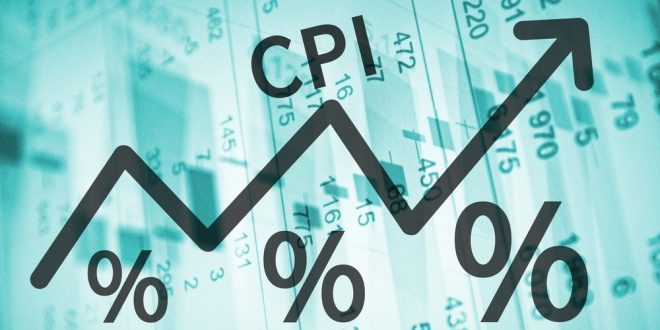Americans’ cost of living climbed again in November and drove the rate of US inflation to a nearly 40-year of 6.8%, putting more pressure on households as they confront rising prices of fuel, food stuff, cars and house rents.
The consumer price index increased 0.8% last month, the government said Friday versus estimates of 0.7%. Consumer prices surged at the fastest pace in nearly four decades in November as Americans paid more for practically everything, hardening hot inflation as a key trait of the economic recovery.
The consumer price index rose 6.8% in November from a year ago, according to a new Labour Department report released Friday, marking the fastest increase since June 1982, when inflation hit 7.1%. The CPI – which measures a bevy of goods ranging from gasoline and health care to groceries and rents – jumped 0.8% in the one-month period from October.
Core prices, which exclude more volatile measurements of food and energy, soared 4.9% in November from the previous year – a sharp increase from October, when it rose 4.6%. It was the steepest rate since 1991.
Price increases were widespread: Energy prices jumped 3.5% in November and are up 33.3% year over year. Gasoline is a stunning 58.1% higher than it was a year ago. Food prices have also climbed 6.1% higher over the year, while used car and truck prices – a major component of the inflation increase – are up 31%.
The Labor Department said the increases for food and energy were the fastest 12-month gains in at least 13 years. Rising inflation is eating away at strong gains and wages and salaries that American workers have seen in recent months.
This is bad news for President Biden, who has seen his approval rating plunge as consumer prices rose. The White House has blamed the price spike on supply-chain bottlenecks and other pandemic-induced disruptions in the economy, while Republicans have pinned it on the president’s massive spending agenda.
Biden looked to downplay the November inflation figure before its release, saying in a statement on Thursday that the data would not reflect the decline in gas prices. He stressed that passing his $1.7 trillion social spending and climate plan is necessary to help lower costs.
“Fortunately, in the weeks since the data for tomorrow’s inflation report was collected, energy prices have dropped,” Biden said in a statement.
The eye-popping reading – which marked the sixth consecutive month the gauge has been above 5% – could threaten the passage of the Build Back Better bill, however: Sen. Joe Manchin raised concerns this week about soaring inflation and refused to commit to supporting his party’s massive social spending and climate plan until he sees the final text of the $1.7 trillion spending plan.
US annual inflation will remain above the Federal Reserve’s target of 2 percent over the next three years amid rising wages and strong demand for goods and services. The reading will also have major implications for the Federal Reserve, which is holding its two-day, policy-setting meeting next week.
Though central bank policymakers initially downplayed rising inflation as “transitory” and likely to abate as supply-chain disruptions cleared up, Chair Jerome Powell shifted his tone last week to acknowledge the increase has been higher and longer-lasting than policymakers expected.
Fed officials have started to suggest they may have to react to rising prices by speeding up their withdrawal of pandemic support for the economy.
That could mean the Fed’s bond-buying program ends sooner than expected, potentially leading to a faster-than-expected interest rate hike.
This could be good news for a Fed that has come under increasing pressure to hike rates against elevated inflation. The strength and speed of the recovery, relative to past recessions, has made it difficult for some to come to understand features that would distinguish “transitory” from “persistent” inflation, with calls for hikes, and in light of that ambiguity, Fed Chair Jay Powell has moved away from the term “transitory” in recent press conferences, preferring instead to emphasize the new “broad-based” nature of inflation.
Despite the noise about tapering asset purchases, the Fed has provided clear forward guidance on the path of interest-rate policy: Rates will not rise until inflation is above target and labor markets have recovered to the Fed’s goals for near-term maximum employment. So, the choice of double conditionality reflects the lessons learned from the slow recovery and implementation of the Evans Rule during the Great Recession.
Markets are positioned for two hikes relatively early in 2022. An appropriate clarification of the Fed’s short-term estimate for maximum employment metrics including labor force participation, the employment-population ratio, and wage growth metrics may loosen conditions, as traders and investors get a clearer sense of the Fed’s commitment and reaction function.
 Noor Trends News, Technical Analysis, Educational Tools and Recommendations
Noor Trends News, Technical Analysis, Educational Tools and Recommendations





